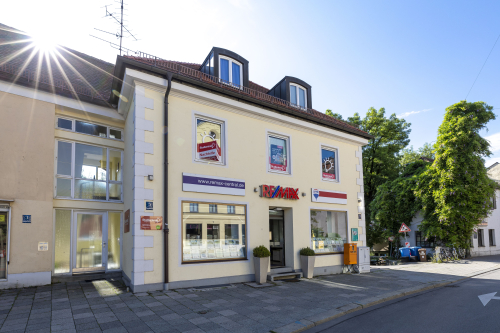Laim
Geschichtliche Hintergründe
The district of Laim, originally known as “Leima” or “Laimen,” was first mentioned in historical records in 1045. For centuries, Laim was an independent rural village and had existed longer than Munich itself. However, the construction of the Laim freight yard in 1892 marked the beginning of a rapid transformation into an urban district. With the development of building land and the tram connection from Stachus to Laim, the area quickly grew. On January 1, 1900, Laim was incorporated into Munich, becoming an important urban part of the city.
Location
Laim is located in the western part of Munich and borders Schwanthalerhöhe to the east, Neuhausen-Nymphenburg to the north, Pasing to the west, Hadern to the southwest, and Sendling-Westpark to the southeast. Laim is well connected in terms of transportation, with access to the S-Bahn, U-Bahn, and a tram line, offering excellent connections to the greater Munich area.
Building structure
The cityscape of Laim is characterized by a mix of multi-story apartment buildings along the main roads, as well as row houses and single-family homes in the side streets. The development was particularly densified in the first decades after incorporation. Today, Laim is predominantly a residential area. Architectural landmarks include the “Laimer Würfel” and “Auron,” both of which stand out due to their distinctive architecture. The business complex with over 11,000 m² of rental space represents another important element in the district’s economic profile.
Population
With a total of 53,359 residents, Laim has a population that predominantly belongs to the middle class. The proportion of foreign nationals is 23.8%, which is below the city average. There is a particularly high proportion of single-person households as well as households with single parents.
Age Structure in Laim
The largest portion of Laim’s population (44.9%) is between the ages of 15 and 45. The proportion of children under 6 years old is relatively low at just 5.3%. However, the share of residents over 65 is steadily increasing, indicating an aging population.

Age Structure in Laim
Numbers and Facts
- Area: 527.72 hectares
- Population: 53,359
- Population density: 101 inhabitants per hectare




